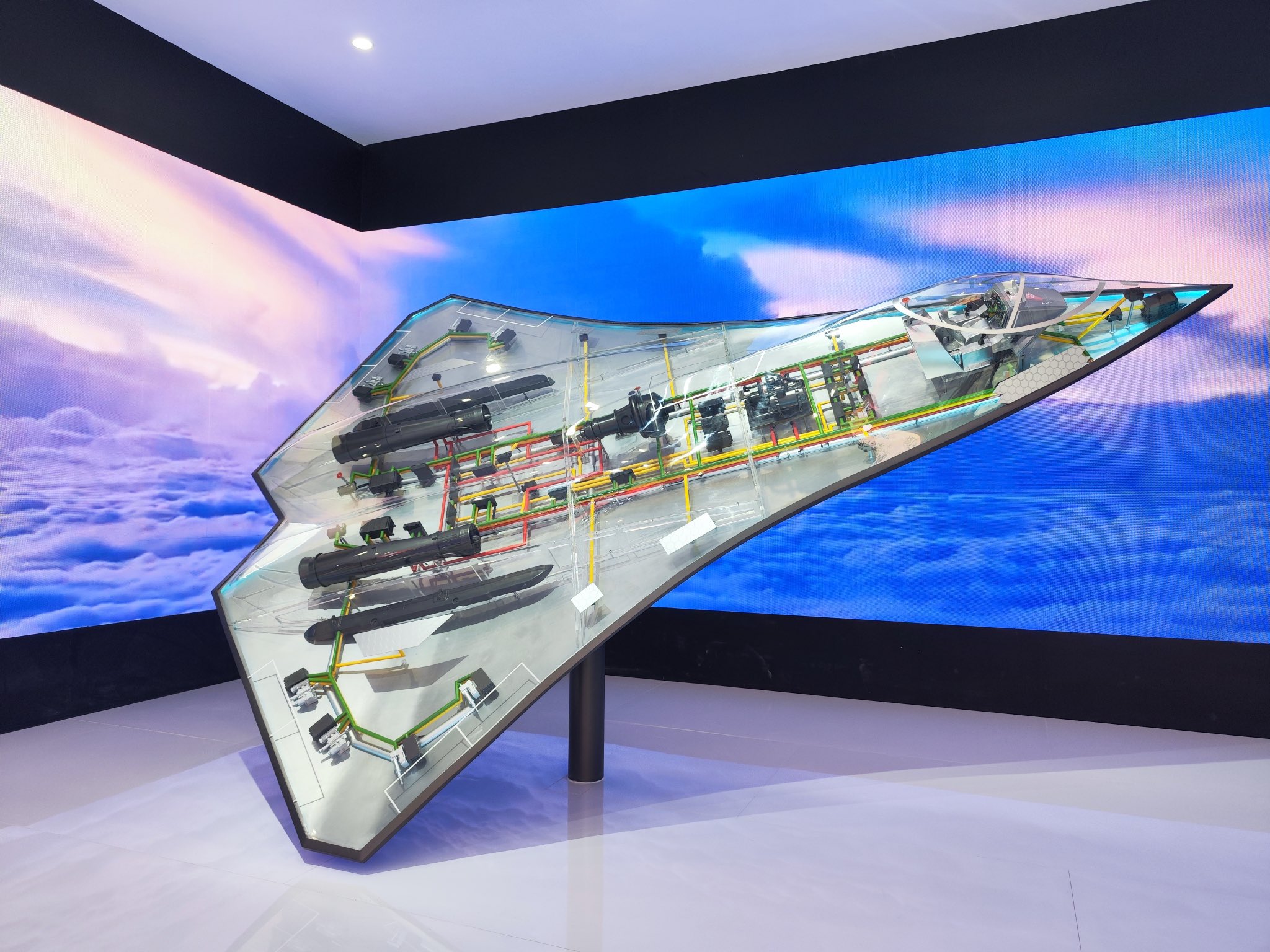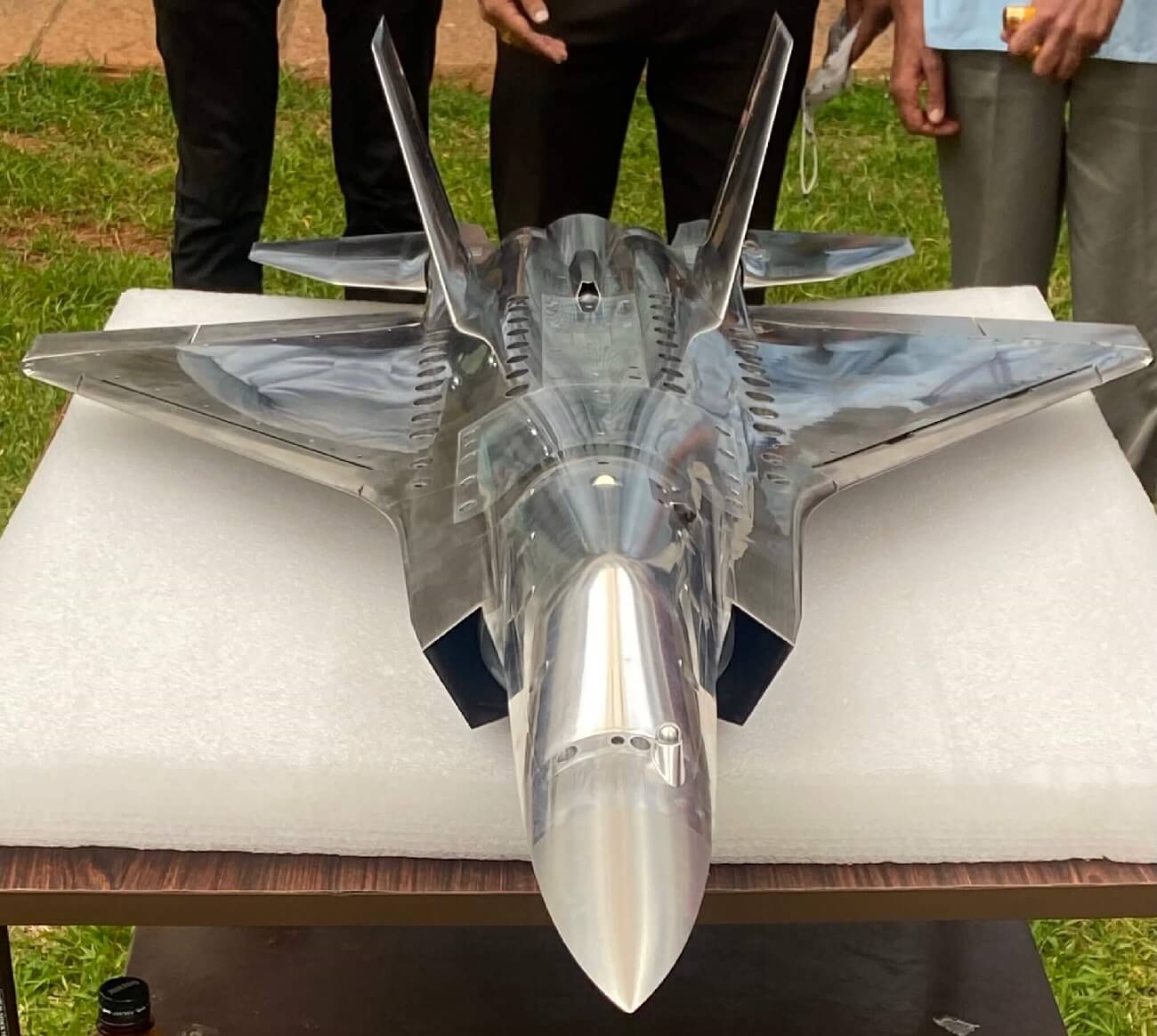India’s fifth-generation fighter program, the Advanced Medium Combat Aircraft (AMCA), is gathering pace. The first aircraft is expected to roll out of production lines by 2034 when China could be preparing to deploy its sixth-generation aircraft.
India’s AMCA Not A 5th-Gen Fighter Jet? Lacks 3 Key Features To Be In The Same League As F-35: OPED
The Indian Defense Ministry is reportedly developing a strategy to involve the private sector in the design and development of the AMCA project to accelerate its completion.
According to reports, the prototype is expected to be completed by 2028-29. A source quoted by the Indian media outlet ‘The Hindu’ said, “The design of the AMCA is ready. The prototype is expected to roll out by 2028-29, and the production is expected to begin from 2032-33. The target is to have it ready for induction in 2034, a decade from project sanction.”
It is anticipated that the private sector will play a major role in helping to get production and delivery back on track. “We have to decide a model for private sector involvement. A model is expected to be worked out in the next six months,” the official source said. The specifics, however, of private sector involvement are unclear until the Indian government makes an official announcement.
Like the indigenously built LCA Tejas variants, the fifth-generation aircraft project has experienced significant delays. In contrast, China has already fielded more than 200 fifth-generation J-20 fighter jets. By the time India rolls out its first fifth-generation fighter aircraft, the AMCA, China will have at least 1000 J-20 stealth fighters in its inventory.
China Moving To Sixth-Generation Fighter
China is already moving to develop sixth-generation fighter jet technologies. Although its defense programs remain shrouded in secrecy, reports over the last few years have suggested that work on a next-generation aircraft is advancing.
In February 2023, the Aviation Industry Corporation of China (AVIC) shared its sixth-generation fighter aircraft concept on social media. The concept included diamond-shaped wings and a tailless design. Similar images had been released through various AVIC presentations earlier.
More recently, an ace test pilot of China’s J-20 stealth fighter jet told the state-owned Chinese publication Global Times that “the technology of our country’s aviation industry continues to develop; the next generation will come out soon.” Additionally, Chinese analysts stated unequivocally that China will not sit on the J-20, given that other countries, including the US, had already started developing sixth-generation fighter jets.
This could leave India in a predicament. Not only is the country far from fielding a fifth-generation fighter jet but its adversary, across the border, is graduating to far more advanced technologies. Even Pakistan has approached China to acquire J-31 fifth-generation aircraft and could have them as early as 2029, much before the first AMCA is rolled out.

Despite involving private players and giving a new boost to the AMCA program, India is still lagging in trials. This does not augur well for New Delhi, especially as Beijing continues to assert itself more aggressively and has only ramped up deployment and infrastructure development along the disputed border.
A Capability Gap That Continues To Widen
The Indian Air Force (IAF) has a limited number of outdated fighter jets to protect Indian airspace, a result of delayed acquisition and sluggish development of domestic aircraft. Over 15 years ago, when India and Russia collaborated to create the Fifth Generation Fighter Jet (FGFA), the country’s search for next-generation aircraft had begun.
The AMCA was launched in 2010 and has also faced delays. The first flight of the AMCA aircraft was reportedly planned for 2024-2025. The project called for five prototypes to complete a four-year flight-testing program. The AMCA was supposed to go into series production by 2028 or 2029.
Nevertheless, all strategies have failed, and the Defence Research and Development Organisation (DRDO) is being criticized for establishing ambitious deadlines and consistently failing to meet them. As a result, India is now facing a significant capability shortfall with no interim solution until the arrival of the first AMCA.

Options For India To Narrow The Gap
EurAsian Times asked former IAF boss, Air Marshal Anil Chopra if there was a way India could look to fill the gap.
Air Marshal Chopra said, “India needs an external solution — to purchase at least two to three squadrons of advanced fighter jets as a stop-gap solution since we know the AMCA won’t be fielded until 2035. India might have three options: the US F-35 Lightning II, the Russian Su-57 Felon, or opt to become a co-developer in one of the two European next-generation aircraft programs, the GCAP (Global Combat Air Programme) or the FCAS (Future Combat Air System).”
However, the veteran said that even if India decided to purchase a fifth-generation fighter, there would be hurdles to overcome. “While the US got its F-35 to India for the Aero Show last year for the first time, it would not be willing to sell the aircraft as India operates the Russian S-400 air defense system. A waiver could be considered, but if the Pentagon did not give a waiver to a NATO ally (Turkey), it is unlikely that it will come to India at this point.”
EurAsian Times understands that while the Su-57 could have been a plausible option since India wanted to develop it at one point, the Russians have developed the aircraft in limited numbers. It is currently involved in a war that ceases to end, and production could be a massive issue.
Other experts that EurAsian Times spoke to said that India cannot be caught sleeping while the timelines of its fifth-generation aircraft continue to be pushed further away. An expert pointed out that India’s LCA Tejas MK-1 flew before the JF-17 but hasn’t matched up to the latter’s production or induction.
The troubles for AMCA are manifold. It was previously reported that the aircraft would not immediately be a fifth-generation stealth aircraft as it will have external storage. In addition, India has also been struggling with an engine that would power the AMCA.
As the Air Marshal puts it, “India is stuck between the jaws of a vice for the risks associated with available options.” Even the consortiums developing sixth-generation aircraft have to unanimously agree to add more partners, specifically with the addition of India.
233 Gurkha Soldiers Held Hostage — How Indian Army Launched Operation Khukri & Stunned The Opponents
When asked what would be the best way forward for India to get a stop-gap solution until it inducted AMCA, Air Marshal Chopra said, “India could opt for the F4 or F5 variant of Rafale. It could buy 114 Rafale F4s under the MRFA (Medium Multi-Role Fighter Aircraft) contract, which will also allow local production and bolster the ‘Make in India’ policy. To top it all, it could buy the most advanced iteration of Rafale F5 to bridge the capability gap with adversaries.”
Rafale is one of the contenders of IAF’s 114 aircraft proposal. Reports indicate that the Indian Navy has shortlisted the Rafale-M (Marine). The IAF already has the infrastructure for two more Rafale squadrons.
Meanwhile, veteran Vijainder Thakur, a prominent voice on India-Russia relations and former IAF pilot advocates for the Su-57.
Writing for the EurAsian Times, he believes Russia has incorporated significant upgrades in the fighter, exceeding IAF’s expectations. Since India put its FGFA (fifth-generation fighter program) participation on hold, Russia has not only improved the Su-57 but also operationally tested the aircraft, first in Syria and then in Ukraine.
The only realistic option India has is a collaboration with Russia if IAF is serious about countering the ever-increasing threat from China and Pakistan. F-35s may cost India its sovereignty, he quipped.
- Contact the author at sakshi.tiwari9555 (at) gmail.com
- Follow EurAsian Times on Google News




